Photo
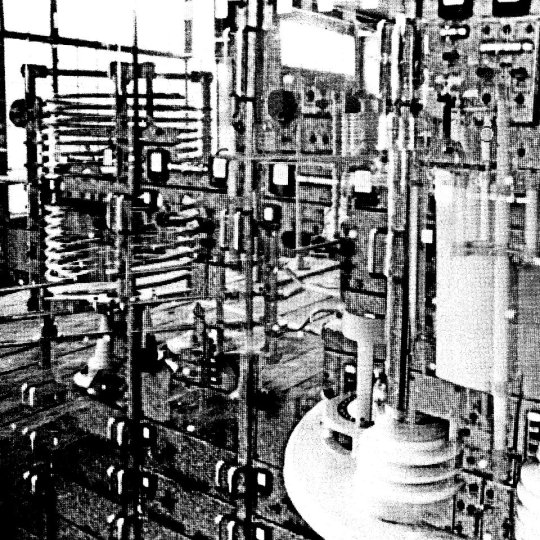
Download Pariah - Rift EP (2012)
Pariah has made some intriguing singles with Blawan as part of Karenn, but there hasn't been a proper release from UK producer since 2010's Safehouses EP. On June 11, R&S will release the Rift EP, which features three new Pariah tracks. "Signal Loss" is a spare, minimal track driven by chopped up vocals and soft piano chords.
#R&S#Pariah#Rift#EP#Mediafire#Download#Pitchfork#Minimal#Bass#Beat#Electronic#UK#Producer#Blawan#Signal Loss#leak#RS1207#2012
12 notes
·
View notes
Photo

Download Vedomir - Vedomir (2012)
Dutch house and techno imprint Dekmantel have revealed details of a forthcoming artist album from mystery producer Vedomir.
The label, which is celebrating its fifth anniversary in 2012, today posted a stream of the album (along with the artwork and full tracklisting) on its Soundcloud page. Some of you may have noticed the label recently slip out a white label 12″ of Vedomir material, evidently as a teaser for the long player.
Entitled Vedomir, a quick listen to the tracks on offer reveals a musically rich take on downtempo deep house. In a move that will please vinyl fetishists, the LP will be released on gatefold double vinyl format, with design duties undertaken by Red Light Radio chief Orpheu de Jong.
Equally exciting is news of a second studio album from Juju & Jordash (aka Gal Aner and Jordan Czamanski), which the duo announced last week. Although details are still relatively sacre, Czamanski told Juno Plus the as yet untitled album would range musically “from nightmare techno to psychedelic folk, 80s industrial to free jazz”.
Dekmantel will release Vedomir in the second week of April, 2012, on 2xLP vinyl format. There’s no word on a release date for the Juju & Jordash album just yet but keep an eye on Juno Plus for more details as they emerge.
Those of you yet to be charmed by the output of Dekmantel should peruse our recent feature here, which comes replete with an exclusive mix from Juju & Jordash.
Tracklisting:
A1. Jump In The Past
A2. Music Suprematism – (Keyboards And Co-Produced By Vasiliy Filatov)
A3. Casserole 80th
B1. Forks, Knives And Spoons
B2. I Don’t Aspire Perfection I Accept That I Have – (Keyboards And Co-Produced By Vasiliy Filatov)
B3. Hello
C1. Scream Of Kind Morning
C2. Dreams
D1. Lullably – (Keyboards And Co-Produced By Vasiliy Filatov)
D2. Orud’ Evo
#vedomir#vakula#2012#Dekmantel#Mediafire#Download#House#Deep House#Electronic#Dance#Techno#Tech-House
3 notes
·
View notes
Photo

Download Oliver Deutschmann - Darkroom Tales EP (2012)
The first thing that must be pointed out about Deutschmann’s Loganic collaboration, “Darkroom Tales,” is that title. What a title. The music that bears it is every bit as hedonistic, decadent, and seedy as you’d hope: high-octane house that starts at a gallop — replete with deep, barely audible moans and sharp breaths — and never, ever slows down. It hungrily collects new elements to add to the dizzy conveyor-belt effect until it’s a hurtling mass of moving bells and whistles. Shakers, mallets, a vaguely alienating vocal sample (“What it’s gonna be? What’s it gonna be?”), handclaps that slice up the bars into uneven, colliding chunks of broken rhythm — it’s quite a ride. And if it weren’t grandiose enough, an ‘ardkore-worthy synth riff floats up from the abyss to dominate the track’s midsection, a victory lap for a track that builds energy so masterfully it’s hard not to get sucked into some kind of outrageous motion even if you’re just listening on headphones.
Label head, Tristen, provides an edit that’s a little more Aim friendly, blurring the original’s incisive slam into pleasant deep-house chord smears and turning the original’s darkroom blackness into photo-negative white. The sexily swung groove is still there, but here it’s weighed down by the lumbering kick and deconstructed melody, more like an added little bonus to an incredible track that didn’t need reinterpreting in the first place. A label so well defined as Aim jumping off on a tangent can sometimes be a dealbreaker, but “Darkroom Tales” is easily one of the most infectious and impressive tracks of the young year so far.
Tracklist:
01. Darkroom Tales (feat. Loganic)
02. Darkroom Tales (Tristen Edit)
#aim#oliver deutschmann#tristen#darkroom tales#ep#2012#mediafire#download#deep house#house#chill#dance#aimx#aimx1#white
2 notes
·
View notes
Photo

Download Drexciya - Journey of the Deep Sea Dweller I (2012)
Forget James Cameron and his $200 million budget: Equipped only with outdated Japanese electronics, Drexciya were the true masters of the deep. From 1992 until 2002, the mysterious electro outfit created not only some of Detroit's most original and enduring electronic music; they created an entire imaginary world, one of the greatest myth systems in the history of techno.
A new compilation of the group's work, the first in a planned four-volume anthology put out by Rotterdam's Clone label, serves as a crucial introduction to Drexciya's worldview as well as, of course, their music. It's a good time for it: In the past two decades, the meaning of "electro" has repeatedly mutated and diluted though its association with electroclash, then Ed Banger's buzzy brand of dance music, and, lately, big-tent commercial rave like Deadmau5 and Wolfgang Gartner. The Drexciya reissue rightly returns the spotlight to the original electro's signature rhythms and analog palette.
From their first release, 1992's Deep Sea Dweller EP, Drexciya were obsessed with sub-aquatic realms. Their first tracks bore titles like "Sea Quake" and "Nautilus 12", and the following year's Bubble Metropolis EP, divided into "Fresh Water" and "Salt Water" sides and with center stickers depicting dolphins cavorting beneath craggy cliffs, poured it on thicker with "Aqua Worm Hole" and "Danger Bay". The music was appropriately liquid, with hi-hats like raindrops, bass like the belch of some fanged denizen of the fathomless dark, and blippy melodies bobbing like bioluminescent lures.
Adapting the lurching rhythmic template of 1980s electro-funk acts like Man Parrish, Cybotron, and Jonzun Crew, Drexciya emphasized the depth-charge qualities of a booming 808 kick, and the electric-eel jolt of a zapping filter sweep. But it went deeper than that. The music was punctuated by cryptic interludes and scraps of code, like an intercepted transmission from "Drexciyan Cruise Control Bubble 1 to Lardossan Cruiser 8 dash 203 X", a head-spinning array of names and numbers relating to something called the "Aquabahn".
Drexciya weren't just trafficking in metaphor and affect; they were telling a story, one worthy of its own blockbuster film. Their "Aquabahn" was, of course, a reference to Kraftwerk, whose robotic method act set an important precedent for Drexciya's own mythmaking. Played out across track titles and cover art, one sheets and liner notes, it went something like this: During the Middle Passage, many pregnant women, sick or dying or simply too much trouble for their captors, were thrown overboard. The fetuses in their wombs, still accustomed to a liquid environment, survived. They thrived, in fact, growing fins and gills, and made their home in the ruins of an underwater city, where they mounted their counter-offensive against human greed and stupidity.
The message fit with the militant stance of Detroit's Underground Resistance label collective, with which Drexciya were affiliated, and so did their anonymity. When James Stinson died, in 2002, I'm willing to bet that most fans didn't even know his name, nor that of his collaborator Gerald Donald. Drexciya were rumored to be related to other shadowy electro projects of the era, like Elecktroids and Dopplereffekt-- a creepy, ostensibly antihumanist project featuring showroom dummies on its record covers and vocoded lyrics like "We have to sterilize the population"-- but in the pre-Discogs era, this was all speculation. To immerse yourself in Drexciya's world was akin to following a particularly far-out comic book, where the misfits wrote the rules and justice always prevailed. It was punk as fuck, frankly-- but from an Afrofuturist perspective.
But for all the talk of combat, Drexciya's was profoundly joyful music: impish, rippling, unpredictable, and never anything less than profoundly funky. This is the first takeaway from Journey of the Deep Sea Dweller I. This first volume focuses on the group's first five years, drawing from seven EPs released on labels like Underground Resistance, Submerge, and Warp. (Some tracks have been anthologized before, on 1997's landmark double CD The Quest, but that's long out of print.) Certain tropes predominate: whip-cracking 808 drum patterns, squelchy synthesizer arpeggios, dissonant bleeps and creepy chromatic chord progressions. But there's nothing formulaic about these tracks, which range from the pensive funk of "Aquarazorda" to the double-time frenzy of "Hydro Theory" and "Beyond the Abyss"; it's striking to realize how wildly Drexciya's tempos could vary, especially when compared to the deeply regimented BPMs of today's subgenres of electronic dance music. Indeed, Drexciya made few concessions to DJs: there are no 16-bar intros to facilitate mixing, and at least one point, you can hear a synthesizer pattern skip a beat, probably because one of the musicians leaned on his sequencer at the wrong time.
Lo-fi by today's standards, recorded straight to tape, in real time, with analog machines, Drexciya's sonics are unfailingly urgent and raw; there's more genuine menace in the roiling "Sea Quake" than in practically anything being made today. Clone's Alden Tyrell did a great job with the remastering, preserving the music's wide dynamic range and letting each frequency positively sizzle in space. As hair-raising as the songs can be, it's never an exhausting listen-- unlike too much contemporary electronic music, mastered so uniformly loud that it leaves your ears gasping for air.
It's easy to remember Drexciya primarily for their shtick. Academics love them for their applicability to concepts like Afrofuturism and the Black Atlantic. (Kodwo Eshun was particularly brilliant writing about Drexciya; their slippery maneuvers served as the perfect foil for his own techno-theoretical poetics.) Detroit true-schoolers hold them up as examples of Motor City militancy and analog purism. These are all valid positions, but Journey of the Deep Sea Dweller I also reminds us of Drexciya's influence in other contexts, as well. The opening "Welcome to Drexciya" is a beatless burble that wouldn't sound out of place on a record from Emeralds or Oneohtrix Point Never, artists more commonly associated with the "cosmic" traditions of 1970s synthesizer music. Space is a place, sure. But to immerse yourself in Drexciya's underwater world is to be reminded that there are other dimensions just as worthy of exploration.
"Are Drexciyans water breathing, aquatically mutated descendants of those unfortunate victims of human greed?" wrote a figure identified as the Unknown Writer in the liner notes to 1997's The Quest. "Have they been spared by God to teach us or terrorize us? Did they migrate from the Gulf of Mexico to the Mississippi river basin and on to the great lakes of Michigan? Do they walk among us? Are they more advanced than us? How and why do they make their strange music? What is their Quest? These are many of the questions that you don’t know and never will. The end of one thing… and the beginning of another. Out."
These questions had a different kind of resonance in the 1990s, before the answer to every question was just a click or two away, before every new "anonymous" artist felt like a walking, talking spoiler alert. To listen to Drexciya today is to wipe the slate clean. We may know James Stinson and Gerald Donald's names now, but their quest feels as cryptic as ever.
#drexciya#journey of the deep sea dweller I#download#mediafire#pitchfork best new music#bnm#detroit#2012#reissue#electronic#classic#sci-fi#techno#ambient#future#futuristic#bubble metropolis
3 notes
·
View notes
Photo
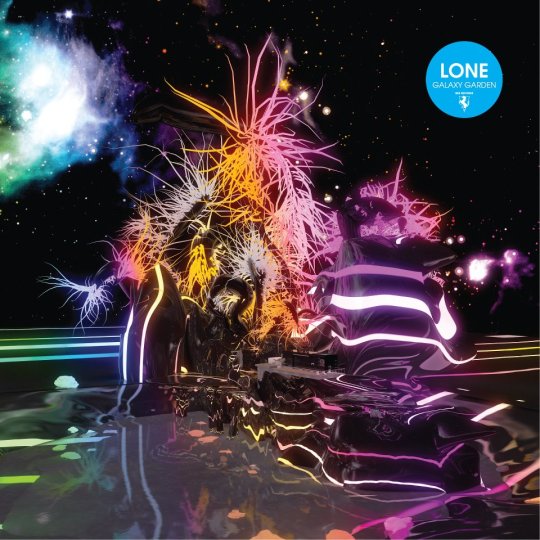
Download Lone - Galaxy Garden (2012)
The aptly titled Galaxy Garden marks a departure from Lone’s previous two albums of blissed out, hip-hop infused electronica. His third LP retains the atmospheric touches of Lemurian and Ecstasy & Friends. It also shares their soundtrack qualities but this time it’s the sonic backdrop to a psychedelic, schizophrenic journey through the cosmos.
Dreamy synths float all over this album giving it a lush but eery feel. There’s beatless moments where pan pipes, whale noises, running water and acoustic guitar could take it into chill out territory but the frantic tribal percussion sees off any such thoughts. The songs shape shift rapidly and Lone glides through genres so smoothly it’s barely worth mentioning them. It’s the juxtaposition of sounds and ideas that makes this such an interesting listen. There’s a clear 90s house/breakbeat influence but it’s one of many. An old-skool rave track is topped with an 80s style noodling synth solo. Smooth melodies slide over low rumbling bass and insistent broken beats. It’s like NASA broadcast a pirate radio station out of the milky way 15 years ago and it’s somehow returned to earth covered in space dust.
Galaxy Garden is a giant leap for Lone taking his songs light years away from the earthy productions of previous albums. It’s a tricky listen to get your ears around at first but your effort will be rewarded with an LP that doesn’t tire easily.
Released May 7th on R&S Records.
#lone#galaxy garden#r&s#hip hop#electronica#synth#90s house#old school#breakbeat#2012#lp#dream#milky way#space#galaxy#garden
9 notes
·
View notes
Photo

Download Moodymann - Picture This (2012)
Moodymann is the nom de disc of Detroit native Kenny Dixon, Jr. An iconoclast with a funkdafied hairdo, Moodymann has built up a devoted listenership over the past two decades with his unique, mutant productions. Often pitched between high-fidelity and infidelity, Moodymann tracks are for those moments when hitting the dancefloor feels the same as rustling the sheets. Purveyor of the label Mahogani Music, Moodymann now connects with Scion A/V to deliver Picture This, eight exclusive tracks of Motor City magic.
0 notes
Photo

Download Lone - Crystal Caverns 1991 (2012)
On his brilliant 2010 LP Emerald Fantasy Tracks, UK producer Matt Cutler combined breakbeat's hyper-speed rhythms with the winsome, glowing tones associated with Boards of Canada, resulting in a gorgeous flurry of emotional electronic music that transcended nostalgia-tripping. "Crystal Caverns 1991" is the first single from Cutler's follow-up to that LP under his Lone guise, Galaxy Garden; as the title suggests, he's looking to the past again, turning his ears to early 1990s rave-- but, again, this isn't just about the past. The aggro-playful synth stabs and clipped vocal samples that are interspersed throughout provide visceral pleasure, but what's most impressive about "Crystal Caverns 1991" is Cutler's gift for unleashing beatific moments at just the right time, from the yo-yo bloops that hit midway throughout to those BoC-like tones layered under the tune's bubbly melody.
[from Galaxy Garden; out 05/07/12 via R&S]
#house#BoC#Matt Cutler#electronic#nostalgic#rave#techno#uk#R&S#Galaxy Garden#Lone#Crystal Caverns 1991#2012
4 notes
·
View notes
Photo
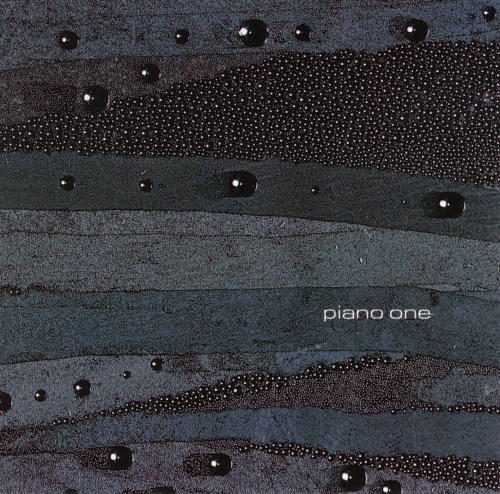
Download Various Artists - Piano One (1985) [FLAC]
Joachim Kuhn, Ryuichi Sakamoto, Eddie Jobson and Eric Watson : where else could we find such creative and different pianists than on this Piano One release by Private Music, which created, in the '80s and early '90s, new territories for instrumental music. Jazz, minimal, electronic, modern classical. This music goes beyond the usual borders of most all solo piano albums of recent and distant memory. While this album is strictly piano music, these piano pieces are played with such an elegance and a subtlety hard to find elsewhere; some modern contemporaries might include Christian Naujoks and Dustin O'Halloran. These recordings and the production of the album as a whole is of impeccable quality and while this FLAC version available above for download is not 24bit FLAC, this album remains a true audiophile's dream. On a side note, the single disc CD version of this album has a unusually high price tag of over $60 new.
VA - Piano One - Tracklist:
1Joachim Kühn - New Feelings
2Ryuichi Sakamoto - Merry Christmas Mr. Lawrence
3Eddie Jobson - The Dark Room
4Joachim Kühn - Housewife's Song
5Eric Watson - Puppet Flower
6Eddie Jobson - Ballooning Over Texas
7Ryuichi Sakamoto - Last Regrets
8Eddie Jobson - Disturbance in Vienna
#1985#1990#Joachim Kühn#Ryuichi Sakamoto#Eddie Jobson#Eric Watson#Piano One#Private Music#Piano#Modern Classical#Post-Modern#Beautiful#Subtle#Magical#Mysterious#Visual#Minimal#FLAC#Mediafire#Various Artists#Music#Download#Classical#Solo Piano#Ambient#Dreams#Jazz
4 notes
·
View notes
Photo

Download Iron Curtis - Way Back Home EP (2010)
There's nothing new to be found in Iron Curtis' new EP for Mule Electronic. Whereas his remix for Coldfish and 12-inch for Mirau last year were otherworldly things that seemed to exist just a bit outside of anything that was happening in dance music, the Berlin-based producer seems to be slowly regressing to the mean. It's not a bad thing: There's great pleasure to be had in "Großreuth 1"'s old-school chord progression, "Save the Night"'s similarly bouncy bass-driven melody or "80 G"'s constantly upbuilding theme and clumpy climax.
Unlike previous work though, Way Back Home seems content to rest in the realm of purely functional. There are no breakdowns that last just a bit too long, or sounds that seem comically out of sync with the rest of the track. The rough edges have been sanded off, proper production techniques have been acquired and now we're merely left with three songs that are merely pretty darn good, instead of transcendent. Needless to say, consistency is a trait worth chasing. After all, a darn good EP is better than a mediocre one. But when consistency becomes the watchword, innovation starts to become that much further away.
#iron curtis#way back home#2010#ep#techno#house#deep house#minimal#320#mp3#download#mediafire#electronic#dance
5 notes
·
View notes
Photo

Download Akufen - Hawaiian Wodka Party (2003)
Marc LeClair blew up after completing his infamous Psychometry trilogy for the Trapez label, unleashing his mighty "Quebec Nightclub" set for Perlon and his massive debut LP 'My Way' for Force Inc. Having escaped a rigorous remix schedule including Massive Attack, Cabaret Voltaire and Craig David , not to mention major label stalkers of all flavours, his long threatened own label project - 'Risque', is finally here. On this new excursion, Akufen returns to his chopped sample library of radio snippets, utilising the more jazzy end of things with cut up brass sounds and those telltale skippy beats. The four tracks are all simply titled 'Tournée', the opener takes the bull by the horns with its jumpy bass and cut up trumpets to deliver a rag-house number that will get the dancefloor all swinging together. The bass heavy 'Tournee' (B2), delivers a heavier slice of Akufen, bottom end playing around quirky kicks superbly, settling the funk into the groove. A label run by Akufen? Definitely one to watch!
#akufen#marc leclair#boomkat#mp3#320#microhouse#deep house#techno#house#leftfield#experimental#mediafire#download#2003#hawaiian wodka party#akufén#my way#micro house#maximal#sample#electronic#minimal
4 notes
·
View notes
Photo
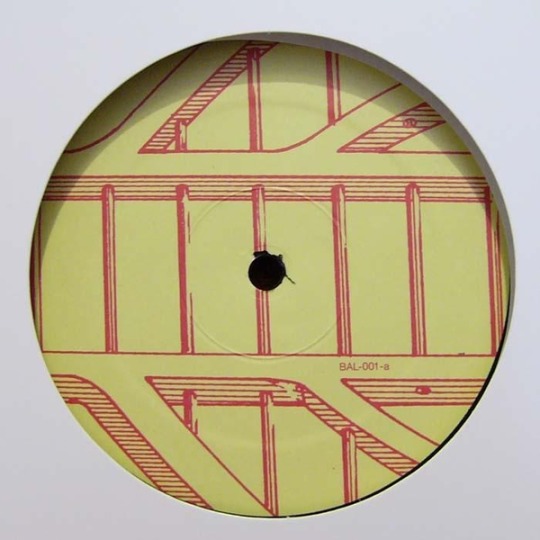
Download Daniel Wang - Look Ma, No Drum Machine! EP (1993) [FLAC]
"Considered a bit of a classic in the field of disco/house, this reissue of Daniel Wang's mighty 1993 classic debut comes at a time when all things proto-disco are enjoying a surge in interest, and this sounds like a veritable 'How To' manual for the genre. Wang's tight sample-based productions are a bonafide joy to the ears - this is an edits 12" where the joins have been smoothed over to the point where it all sounds incredibly organic." - Boomkat.com
#daniel wang#look ma no drum machine#ep#house#electronic#music#mediafire#download#flac#disco#12#vinyl#balihu records
2 notes
·
View notes
Photo

Download DJ Koze - Let's Love / I Want To Sleep EP (2008)
"DJ Koze gets to be as weird as he wants. As a solo artist, he might have made his first mark with the solemn chimes of “Brutalga Square” but it’s been a long journey from there. Like his work with International Pony, Koze flourishes when he’s been willfully playful. Witness the demented remix of Atlas’ “Battles,” the Joe Meek-worthy vocal tweaks of “Smornin” and the chipmunk choir of his remix of Matthew Dear’s “Elementary Lovers.” 2008 has been a banner year for bizarro-Koze – the shimmer-funk remake of Matias Aguayo’s “Minimal” to the messy-dystopia mashed from Sascha Funke’s “Mango.” Then there’s “Zouzou” on Total 9, which might be first worthy follow-up to Matt John’s “Soulkaramba” and a track so perverse it led hyperbole-resistant Hardwax to describe the annual compilation as “Euro dance pop and one exceptional track by DJ Koze.”
Koze usually releases one lone single a year, which is often obscured by the heft and weight of his remix work. “Let’s Love” takes the same model as last year’s excellent “All the Time” –- a solid front-side that sets up the bombshell on the flip. “Let’s Love” might squeak and croon “you come into my heart” as a friendly introduction, but the sighs of sun-burned synths and Doppler chimes make for a nice evocation of late summer nights. The track is subtle, timbres from every sound slide around and swirl out of the ether. And it doesn’t prepare you for “I Want to Sleep,” which, slowed to a throb, follows down the rabbit-hole house revival. But there’s no sunny vibes or tasteful chord stabs for “I Want to Sleep,” instead finding a groove that compresses the low-end like a trampoline –- at first bounce it’s a little uneasy but quickly becomes mesmerizing. As grasshoppers and frogs set up the humid scene, a women talks, inhales, enunciating every phrase. The tone of her voice is sensual, words race forward only to end lackadaisically, tiptoeing around the groove. Given the foreign language, it’s impossible to understand most of what she says, but the unfamiliar speech leaves you lulled by the grain and texture of her voice. And when she finally says “I want to sleep,” which might be the weirdest coup of the track, it hits like a slingshot." - Little White Earbuds
#dk koze#international records recordings#irr#lets love#i want to sleep#house#techno#leftfield#electronic#download#mediafire#ep
2 notes
·
View notes
Photo
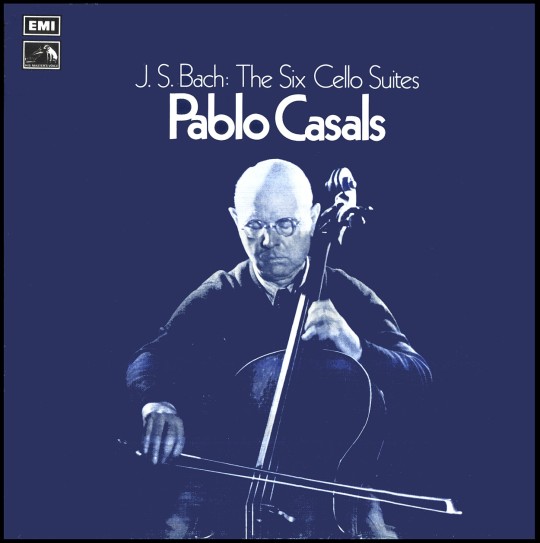
Download Pablo Casals - J.S. Bach: The Six Cello Suites (1936-1939)
The Six Suites for Unaccompanied Cello by Johann Sebastian Bach are some of the most frequently performed and recognizable solo compositions ever written for cello. They were most likely composed during the period 1717–1723, when Bach served as a Kapellmeister in Cöthen.
The suites contain a great variety of technical devices, a wide emotional range, and some of Bach's most compelling voice interactions and conversations. It is their intimacy, however, that has made the suites amongst Bach's most popular works today, resulting in their different recorded interpretations being fiercely defended by their respective advocates.
The suites have been transcribed for numerous instruments, including the violin, viola, double bass, viola da gamba, mandolin, piano, marimba, classical guitar, recorder, electric bass, horn, saxophone, bass clarinet, bassoon, trumpet, trombone, euphonium, tuba, ukulele, and charango.
#pablo casals#j.s. bach#bach#the six cello suites#cello#emi#france#germany#uk#1974#1957#1936#1938#1939#1930s#classical#baroque#rare#vintage#vinyl#320#download#ge.tt
4 notes
·
View notes
Photo

Download Model 500 - Control / The Messenger (2012)
It's considered polite to relate a bit of biographical detail in these reviews—but quite frankly, is there much point here? Without Juan Atkins and R&S, the dance music map would have big holes in it. Back now on his lonesome for this release, with Mike Banks and Mark Taylor sitting on the subs bench, Atkins offers up two tracks of classic Detroit techno, which still manage to stand well apart from each other. "Control" thrashes along to a clanging, metallic Kraftwerk-style rhythm track, over which Atkins lays a twinkly, scurrying synth line and rising melodic pads. A host of robots add their voices to the tumult. "The Messenger" is an altogether more opulent offering of wobbly, haunting pads, steam-driven beats and cathedral-sized, verdant keyboard phrases. It's left, almost organically it seems, to fade out to a simple soundtrack of raw, crunching, metallic drums. A master at work, pure and simple. - Residentadvisor.net
#R&S#Juan Atkins#RS#control#the messenger#single#Model 500#black#silver#320#mp3#download#mediafire#2012
6 notes
·
View notes
Photo

Download ANIKA - Anika (2010)
Self-titled debut, Anika, produced by Geoff Barrow of Portishead, out now on Stones Throw Records.
"Political Journalist" isn't a credential we usually have in musician's bios, but this is exactly what Anika was doing while living between Berlin and Bristol earlier this year when she met Geoff Barrow. The producer was looking for a new singer to work with his band Beak>, and it was immediately clear they shared the same musical vision, including a love of punk, dub and 60s girl groups.
Just a week later Anika and Beak> (Barrow, Billy Fuller and Matt Williams) went into the studio to begin recording material. The resulting album was recorded in twelve days, live, with the four together in one room. Dub with no overdubs. The collaboration is political, trashy, dub, punk, funk ... a cohesive sound, and and experience in uneasy listening.
In the tradition of short-lived but deeply influential 99 Records and the NYC's 80s No Wave nexus, the nine songs on Anika run the gamut from experimental rock ("Yang Yang", "Officer Officer") to covers of folk ("Masters of War") and pop songs ("Terry", "I Go to Sleep"), while showcasing reverb-drenched ancient drum machine rhythms.
The album will be [was] released by Beak's label Invada in Europe, and in USA & Japan by Stones Throw.
2 notes
·
View notes
Photo
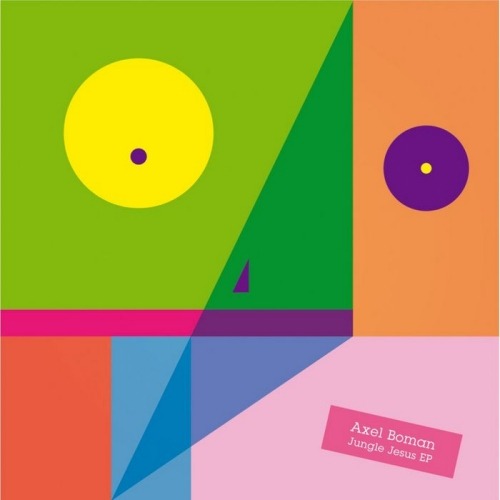
Download Axel Boman - Jungle Jesus EP (2008)
Surprisingly, there's little in the way of a review, on current swedish house monster, Axel Boman's 2008 pre-Pampa release, Jungle Jesus EP, released through Ourvision Recordings.
Without taking the time to write a complete EP review, I'll say this about the EP; the release is ripe with everything any tech/deep-house aficionado wants to find in a good release. The tracks on Jungle Jesus fit beautifully on the dancefloor or in a dimly lit room, filled with cannabis clouds and opium teas.
Jungle Jesus' title track is incredibly reminiscent of Isolée's 'Beau Mot Plage' but somehow finds a way to show you that, despite the similarities that Jungle Jesus and Beau Mot Plage share, Boman knows how to make old ideas sound new; even then, 2008 wasn't exactly yesterday. Four years after this incredible EP was dropped, Boman finally gets the attention he deserves, coming into his own with 'Holy Love' the fourth release on DJ Koze's legendary imprint, Pampa Records (more on this release and Pampa below)...
"Axel is in fact the Swedish word for shoulder, but born and bred Stockholmer Mr. Boman could just as easily have been named Rumpa, the Swedish word for ass, since most of his life has been dedicated to moving just that body part. It was around 1992 that Axel’s ass started dragging the confused youngster into all sorts of weird situations – dodgy warehouses, blooming fields, sweaty basements – just about any place that had a nice sound system and someone pumping a fat bassline through it. With his older brother already being a collector of the latest techno and house records, Axel started keeping a strict diet of fresh beats which has kept him alive and kicking ever since. Building a reputation for himself in the small but very friendly Stockholm club scene, he was soon acknowledged as one of Sweden’s most skillful and best looking dj dudes. Naturally, production activity followed shortly. Working out of small studios in his hometown as well as in Gothenburg (where Axel took his master degree in fine art), tracks like the underground hit “Arcimboldo” on Ourvision Recordings soon landed in the crates of connoisseurs like DJ Koze, Magda and Seth Troxler. His sounds is raw, playful and drenched in oceans of soul – just the kind of stuff the dancefloor’s of today are longing for. 2010 was the big breakthrough year for Axel and his ass, with the epic screw house anthem “Purple Drank” being released on DJ Koze’s new Pampa Records imprint, going off to London to participate in the Red Bull Music Academy and starting up his own label Studio Barnhus together with Petter (Border Community) and local idiot Kornél Kovacs. 2011 saw Axel release a ton of new material and remixes on labels like Permanent Vacation, Moodmusic, Glass Table, Hypercolour, Tartelet and of course Studio Barnhus.
#axel boman#deep house#tech house#techno#house#jungle jesuse#p#ep#2008#pampa#Ourvision Recordings#Arcimboldo#Jungle Jesus#Kinski#Hollywood#OV006#05/25/08#May 24th 2008#May 24#dancefloor
6 notes
·
View notes
Photo

Download Claro Intelecto - Second Blood EP (2012)
Since emerging in 2003, UK man Claro Intelecto has pursued the deeper side of techno, and now makes his Delsin debut with a 3 track EP entitled Second Blood, which precedes the release of his full length album on the same label in march 2012.
With a discography which includes a number of 12”s, EPs and full lengths on labels like Boomkat's own Modern Love as well as Ai Records and others, Manchester man Mark Stewart is known for dropping bomb after bomb, with these new efforts being no different.
First up, the title track Second Blood is a lazy, scuffed and romantic sounding deep dub cut that lurches from one beat to the next with a lazy smile and soft eyes. Plenty of echo and reverb have it drifting off into the distance as warm pads and rising strings add subtle tension.
Another lazy roller but this time with brighter melodic flashes, next effort 'Heart' is just as lateral, dubwise and soothing as the title track, melting your mind into a dreamy state of hypnosis before b2 'Voyeurism' lifts you out of your trance with a firmer kick drum, more cutting claps and groove that bounces a little more than it rolls. Some taught acid notes appear eventually, rounding off a cerebral, dead of night EP made as much for home listening as it is gentle Sunday afternoon comedowns. Essential stuff.
#claro intelecto#second blood#ep#2012#mediafire#essential#deep house#tech house#techno#house#dub#lazy#beautiful#groove#clap#night#comedown#after hours
10 notes
·
View notes